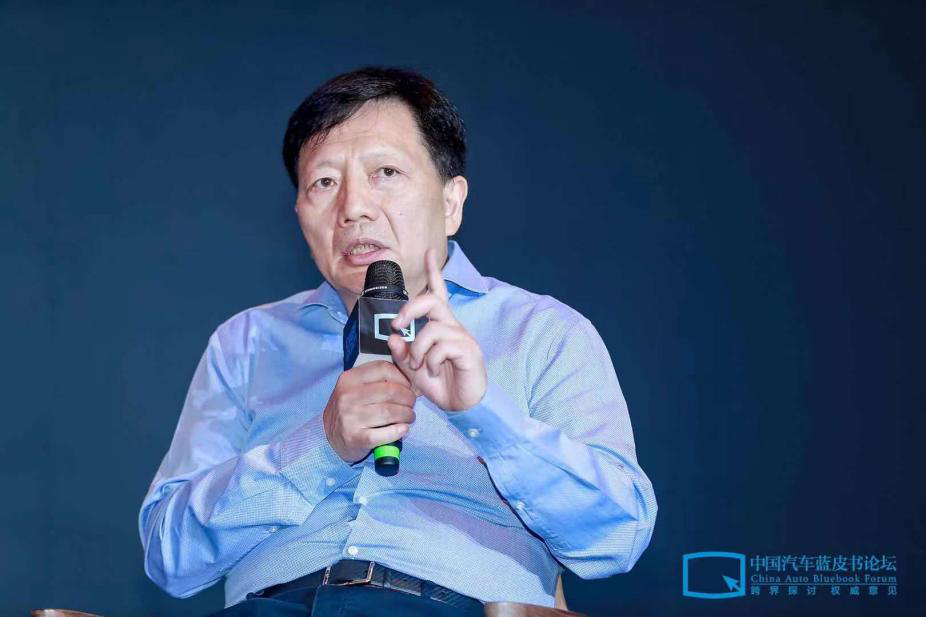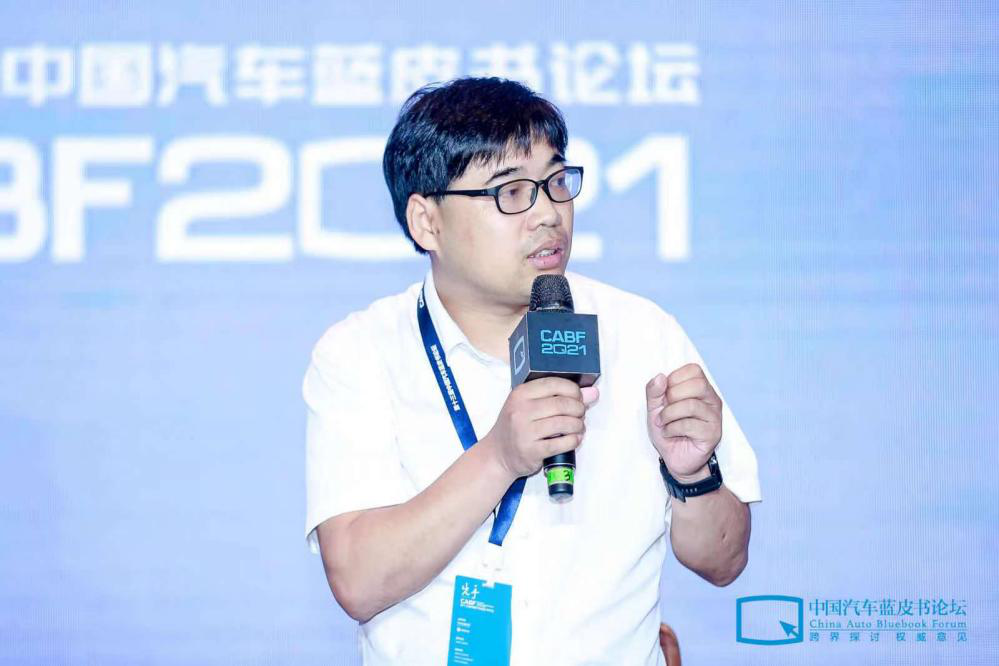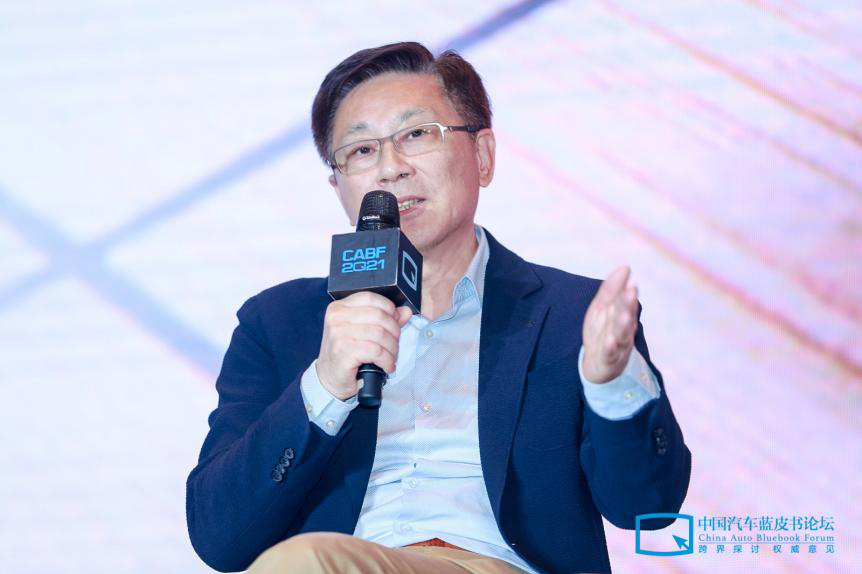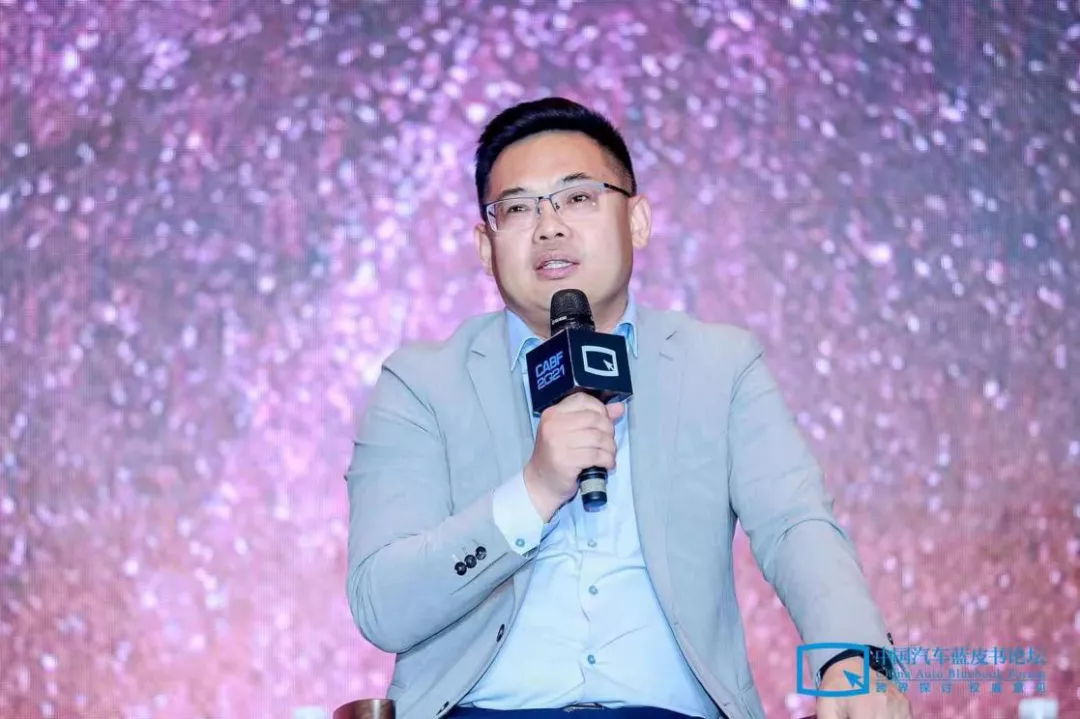Translation
Author: Lingfang Wang
Thanks to companies like NIO, many people believe that solid-state batteries will soon be mass-produced.
However, the reality is far from what was expected. At the thirteenth China Automotive Blue Book Forum on June 12, several top-tier practitioners in the dynamic battery industry expressed pessimism about commercial pure solid-state batteries, with disagreement over semi-solid-state batteries.
Under the theme of “Battery Path Before and After the Arrival of Solid-State Batteries,” during the forum, various guests and attendees, such as Wang Yu, Chairman of Funeng Technology, Yang Hongxin, Chairman and CEO of Honeycomb Energy Technology Co., Ltd, Guo Yongsheng, Head of the 21C Innovative Technology Department of CATL, Xu Xiaoming, Founder and General Manager of Amperex Technology, and Liao Zhenbo, Deputy General Manager of BAIC Group, had a profound discussion under the leadership of Chief Analyst Mo Ke of Zhenli Research.
In addition to discussions about the technical routes of solid-state batteries, semi-solid-state batteries, lithium iron phosphate and ternary batteries, and the prospects of sodium-ion batteries, various issues regarding battery costs were also brought up.
Controversy over semi-solid-state development
There is a difference in opinions between car companies and battery manufacturers regarding the future of semi-solid-state batteries.
As a representative of the automotive industry, Liao Zhenbo, Deputy General Manager of BAIC Group, and Wang Yu, Chairman of Funeng Technology, are very optimistic about the prospects of semi-solid-state batteries. Xu Xiaoming, Founder and General Manager of Amperex Technology, also believes that semi-solid-state batteries can improve battery safety. However, Yang Hongxin, Chairman of Honeycomb Energy, has doubts about the commercial value of semi-solid-state batteries. Guo Yongsheng, Head of the 21C Innovative Technology Department of CATL, thinks that the energy density of semi-solid-state batteries will not improve.
Affirmative: Semi-solid-state battery is a solution to safety issues
Liao Zhenbo has more than 30 years of experience in the automobile industry, and has previously served as President of BYD Battery. As a result, he holds a profound understanding of both automotive and battery industries.
According to Liao Zhenbo, the urgent problem that automobile companies are facing is to shift from the original pursuit of energy density and cost to a new perspective that prioritizes safety, cost, and performance.
He also pointed out that battery costs not only include procurement, but also consideration for after-sales and recall issues.
 During the summer, there are often reports of accidents involving new energy vehicles catching fire and the percentage of vehicle recalls is increasing. According to China’s recall system, any quality issue affecting 0.04% of vehicles requires a recall. This imposes significant cost on whole vehicle businesses, including the procurement cost, after-sales service, and recalls. Therefore, safety is the most important aspect for whole vehicle companies, and cost is higher when safety is not guaranteed.
During the summer, there are often reports of accidents involving new energy vehicles catching fire and the percentage of vehicle recalls is increasing. According to China’s recall system, any quality issue affecting 0.04% of vehicles requires a recall. This imposes significant cost on whole vehicle businesses, including the procurement cost, after-sales service, and recalls. Therefore, safety is the most important aspect for whole vehicle companies, and cost is higher when safety is not guaranteed.
Liao Zhenbo believes that solid-state hybrid batteries are relatively safe when 5%-10% of the battery is in a liquid state, while also meeting the energy density requirements of the automotive industry. He urges battery companies to commercialize solid-state hybrid batteries to provide safe and reliable battery solutions to whole vehicle companies.
Liao Zhenbo thinks that one reason why companies are hesitant to switch to solid-state or even half-solid-state batteries is that equipment must be modified to produce these batteries. Even for half-solid-state batteries, at least 10%-15% of manufacturing processes need to be changed, and battery companies are concerned about the accuracy of their equipment. If the production line has low production pass rates, the cost is high.
Xu Xiaoming, the CEO and founder of Anzhi Technology, believes that it is difficult to see pure solid-state batteries before 2030, and the main application of solid-state electric batteries in the first three to five years will be in consumer electronics due to safety concerns and affordability. However, Xu believes that half-solid-state batteries are feasible and can solve safety problems while improving energy density.
Wang Yu also believes that half-solid-state is definitely the way to go. No one wants to take any risks while producing batteries, and with half-solid-state batteries, factories will no longer have safety issues. However, the ultimate goal is to completely solve the safety problem from the material itself. If that is not possible, then they will use control methods, from design to production to usage, and monitor the safety boundaries of the entire vehicle’s operation to ensure battery safety.
However, some battery companies still have doubts about half-solid-state and solid-state batteries despite the high expectations of automakers. According to Yang Hongxin, although half-solid-state battery technology solves the problem of mass production, it does not necessarily mean that it can be commercialized on a large scale. Large-scale commercialization requires engineering capabilities to support it, and customers willing to pay for it. Right now, he can’t identify any core selling points for half-solid-state batteries.Yang Hongxin believes that the cost of semi-solid-state batteries will increase, and the production line needs to be adjusted. However, the first-generation product does not have a significant impact on the production line, so technical problems can be solved and mass production is possible. However, large-scale commercialization has considerable uncertainty. As for the product, they can be installed in cars this year and next year.
Yang Hongxin believes that the mainstream in the next ten years will still be ternary, lithium iron phosphate, and nickel-manganese.
Guo Yongsheng, the head of the forward-looking technology department of the Ningde Times 21C Innovative Experimentation Lab, believes that the energy density of the first-generation solid-state battery products will not be improved.

During the R&D process, Guo Yongsheng divided solid-state batteries into three generations based on the positive and negative electrodes.
The first generation is to replace the traditional electrolyte solution with a solid-state electrolyte solution. The positive and negative electrodes remain the same as traditional ones without being changed.
The second generation replaces the negative electrode. If the negative electrode does not use graphite or silicon, the energy density of the metal lithium should be able to be improved. The positive electrode remains the same as traditional ones and uses either iron phosphate lithium or ternary materials.
The third generation changes both the positive and negative electrodes. If the negative electrode uses metal lithium, the positive electrode can be replaced with a high-energy material without lithium.
In Guo Yongsheng’s view, most of the solid-state batteries currently referred to are mainly first-generation. However, it is difficult to increase the energy density of the first-generation solid-state battery because the true density of the solid-state electrolyte is higher than that of the electrolyte solution. “If you pour the same volume of electrolyte into the battery as the electrolyte solution, the weight will increase, and the energy density of the battery will decrease,” said Guo Yongsheng.
Low energy density of sodium-ion batteries, but energy storage has a promising future
On May 21st, at the Ningde Times shareholders’ meeting, its chairman, Zeng Yuqun, revealed that a sodium-ion battery will be released around July this year, which has attracted wide attention in the power battery industry.
Regarding the application prospects of sodium-ion batteries, the views of several car and battery company representatives are basically the same. The advantage of sodium-ion batteries is low cost, but the energy density is also low. They have great potential in the field of energy storage.
Wang Yu, the chairman of Funeng Technology, believes that sodium-ion batteries may pose a certain threat to the iron phosphate lithium market.

Yang Hongxin also believes that China’s lithium resources are very scarce, and there should be a strategic solution. However, the application of sodium-ion batteries in passenger cars is still very challenging at least for the next few years. “It may replace some lead-acid and lithium iron phosphate batteries because of their low energy density.”Xu Xiaoming believes that lithium resources are mainly concentrated in Latin America, and it is worth developing from the perspective of resource security, as it has the biggest application in energy storage. Although its energy density may be slightly lower, at least there is no shortage of sodium resources.
However, Xu Xiaoming also pointed out that sodium-ion batteries, at least 5 years later, will gradually mature only with the gradual reconstruction of the entire chemical system of existing batteries.
Liao Zhenbo also believes that sodium-ion batteries are a very good direction, but it may not be suitable for passenger cars in the automotive industry.
Controversies Remain on the Ternary and LiFePO4 Paths
In response to the LiFePO4 and ternary battery routes, Wang Yu and Liao Zhenbo clearly sided with ternary batteries.
In Wang Yu’s opinion, ternary batteries will still become the mainstream for passenger cars. “We hope to use half of the volume and weight of ternary batteries, 20 minutes to fully charge, release 30-50 kWh of electricity to meet the demand. This is the future direction. Technological progress should drive the development of human society.”
Wang Yu said that the safety of NCM811 is completely controllable, “only we have not yet reached this level. From raw materials to battery manufacturing to vehicle control to warning, we cannot achieve it now, but we can do it in the future.”
Liao Zhenbo believes that in order to pursue energy density, ternary batteries have been developed from the 111 system to the 523 system, 622 system, and then the 811 system, and now returns to the 622 and 523 systems. This is a regression in technology. “Although it satisfies the requirements for safety, the energy density is really not commendable, which brings great difficulties to our entire vehicle factory.”
Liao Zhenbo gave an example of a 4.8-meter SUV, where the weight of an electric vehicle is 300-400 kg heavier than a traditional vehicle. In terms of carbon neutrality, energy consumption, etc., it is not suitable. If the energy density of the battery comes down, the weight will have to increase significantly, causing great difficulties for the design, safety, handling, and even the strength of the chassis. Therefore, energy density cannot simply be reduced.
Therefore, in Liao Zhenbo’s view, the energy density of a single cell must reach 280-320 Wh/kg in order to meet the weight requirement of the entire vehicle design, “if it is lower than this, the battery pack energy density cannot exceed 220 Wh/kg, and the battery will be a burden to the vehicle. From this perspective, ternary batteries must be used.”
Xu Xiaoming admitted that LiFePO4 batteries cannot meet the energy density of 280 Wh/kg.
But Xu Xiaoming believes that what Liao Zhenbo said is aimed at mainstream models of cars. Different cars have different requirements. For example, if a car is equipped with 50 kWh of electricity, its system can achieve a weight difference of 200 Wh/kg and 160 Wh/kg. The weight difference may be obvious, but when it comes to 30 kWh of electricity, the weight difference may be small.Yang Hongxin said that it is technically possible to achieve energy density approaching that of ternary batteries for lithium iron phosphate batteries, such as through silicon doped lithium-ion technology, but the challenge of mass production is very difficult due to changes in production lines and engineering implementation difficulties.

Yang Hongxin believes that there will be many markets for both ternary and lithium iron phosphate batteries. If we stick to one path, we will all be successful.
The procurement price of power batteries in 2025 is still 500 yuan/kWh.
In 2021, the soaring price of battery raw materials will not have an impact on the cost reduction of batteries?
Several guests also gave their own predictions for the price of batteries in 2025.
Xu Xiaoming still maintains his judgment from last year. “This round of price increases is just a small ripple, and there will be no big fluctuations.”
Xu Xiaoming’s judgment last year was that in 2025, the cost of lithium iron phosphate batteries would be less than 50 cents per watt hour and possibly only 40 cents.
Liao Zhenbo believes that as a whole vehicle enterprise, the lower the better. Currently, from lithium iron phosphate, it should be below 45 cents per watt hour; for the 811 system, it is hoped to achieve below 650 yuan per kilowatt hour.
Liao Zhenbo also called for battery companies not to have excessive profits, “None of our pure electric vehicle companies are profitable, but I can see that these listed companies’ battery companies are not unprofitable, so I call on battery manufacturers to really give benefits to the whole vehicle enterprise.”
On the other hand, Yang Hongxin believes that due to the imbalance in supply and demand in the next few years, it is difficult to give a reasonable prediction for battery prices due to the shortage of battery supply.
Yang Hongxin admitted that there will be an explosive growth in both whole vehicle demand and energy storage demand in the future, and the pressure on the supply chain is great. They are currently trying to solve the supply bottleneck problem.
This article is a translation by ChatGPT of a Chinese report from 42HOW. If you have any questions about it, please email bd@42how.com.